I’ve prepared some background on and images of the leaders of the various powers, primarily relying on their wikipedia articles.
Austria:
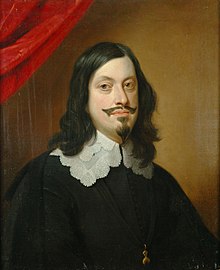
Emperor Ferdinand III was born in 1608, the eldest son of Emperor Ferdinand II of Hapsburg and Maria Anna of Bavaria. Ferdinand III was educated by the Jesuits and a devout Catholic.
Ferdinand III was elected King of the Romans (designated heir to the Holy Roman Emperor) in 1636, and succeeded his father as Holy Roman Emperor in 1637. He had been the titular head of the Imperial Army since 1634, and a leader of the peace party at court, responsible for negotiating the Peace of Prague with Saxony in 1635. This attempt to unite the German princes against Swedish and French invaders was only partially successful, as the Thrity Years War dragged on for another 13 years before the Peace of Westphalia.
In 1644, Ferdinand III gave all rulers of German states the right to conduct their own foreign policy, hoping to gain allies in the ongoing peace negotiations with France and Sweden. The edicts most notable effect, however, was to erode imperial authority within the imperial constitution.
Ferdinand III’s authority was much diminished by the Peace of Westphalia, and he spent the remainder of his reign working to rid Germany of foreign soldiery and check the ambitions of Charles X of Sweden.
Ferdinand III’s full style is: Ferdinand III, by the grace of God elected Holy Roman Emperor, forever August, King of Germany, King of Hungary, Bohemia, Dalmatia, Croatia, Slavonia, Rama, Serbia, Galicia, Lodomeria, Cumania, and Bulgaria; Archduke of Austria; Duke of Burgundy, Brabant, Styron, Carinthia, Carniola; Margrave of Moravia, Duke of Luxembourg, of the Higher and Lower Silesia, of Württemburg and Teck; Prince of Swabia; Count of Hapsburg, Tyrol, Kyburg, and Gorogoa; Marquess of the Holy Roman Empire, Burgovia, the Higher and Lower Lusace; Lord of the Marquisate of Slavonia, of Portland Naon and the Saline’s, etc. etc.
Bavaria:

Maximilian I was born in Munich in 1573, and was the eldest son of William V, Duke of Bavaria, and Renata of Lorraine to survive infancy. He was educated by the Jesuits, where he adopted a strong commitment to the Catholic faith. Maximilian succeeded to the Ducal seat in 1597, on the abdication of his father.
Maximilian established the Catholic League, a group of German princes aligned to promote Catholicism and resist the similar Protestant Union, in 1609. In 1619, in return for substantial concessions, Maximilian entered into a treaty with Ferdinand II, then Holy Roman Empire. Maximilian’s armies devastated the Rhenish Palatinate, which enable Maximilian to obtain the titles of Prince-Elector and Arch-Steward.
Maximilian was able to establish himself as an absolutist ruler of Bavaria, and was able to mobilize Bavaria’s wealth and manpower, making Bavaria’s commitment essential to the Hapsburg cause. Maximilian briefly occupied Upper Austria as security for the financing of his military, but surrendered it back to Austria after obtaining the Rhenish Palatinate and Prince-Elector Status.
Maximilan’s style is: Maximilian, Duke of Bavaria, Arch-Steward and Prince Elector.
Spain:
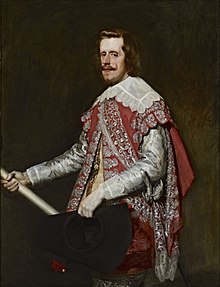
Philip IV was born in 1605 to King Philip III of Spain and Margaret of Austria. He succeeded to the throne on the death of his father in 1621.
Philip IV was recognized by his contemporaries as the model of a Baroque king, with a regal bearing of rigid solemnity, Philip IV’s royal bearing was a key political tool for Philip throughout his reign, both with foreign sovereigns and his many creditors. In his public life, Philip IV was a fine horseman, keen hunter, and devotee of bull fighting. In his private life, he preferred having affairs with actresses. He legitimized the son he had with noted actress Maria Ines Calderon, Juan Jose, who was brought up as a royal prince. He also had a keen interest in astrology.
Philip IV was persuaded by his advisers to take on an aggressive foreign policy in support of the Holy Roman Empire, renewing the war with the Dutch at the beginning of his reign in 1621. His armies inflicted a major defeat on the Swedes at the battle of Nördlingen in 1634. This victory increased tensions with France, who supported the Swedes, leading to war with France in 1635. By the early 1640s, revolts began in the Spanish countryside over the cost of the wars, which would force Philip to the negotiating table.
Philip IV’s style, as of the beginning of the game, is: Philip, by the grace of God King of the Spains, Both the Sicilies, Jerusalem, the Indies, etc.; Archduke of Austria, duke of Burgundy, Milan, etc.; Count of Hapsburg, Tyrol, etc. His short title is “the Most Serene Philip IV, Catholic King of the Spains.”
France:
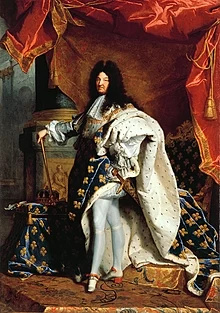
Louis XIV, later to be known as Louis the Great and the Sun King, was 10 years old at the end of the Thirty Years War. He became king as the game begins, in 1643, at the age of 4. His formal style is Louis XIV, by the Grace of God, King of France and of Navarre.
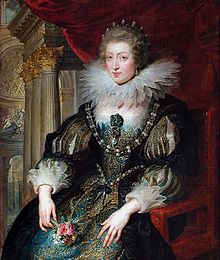
Louis’s mother, Anne of Austria (of the Spanish Hapsburg line) served as regent during the period. She obtained the position of Regent against her husband’s objections, convincing the Parlement de Paris to revoke the will of the late King Louis XIII to allow her to act as regent to her son.
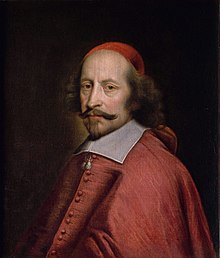
Anne’s chief minister (and rumored lover) was Cardinal Jules Mazarin, who succeeded the legendary Cardinal Richelieu as chief minister to Louis XIII, continuing that role under Queen Anne during her regency and Louis XIV during his majority. Mazarin is credited with playing a major role in engineering the Peace of Westphalia and the modern state system.
Sweden

Christina, Queen of Sweden, ascended to the throne at the age of 6 after the untimely death of her father, King Gustavus Adolphus, at the Battle of Lützen in 1632.

For most of the Thirty Years War, Sweden was ruled by her regent, Chancellor Axel Oxenstierna. Oxenstierna took the position that Sweden should remain in the Thirty Years War in order to ratify the conquests of Gustavus Adolphus, or at least obtain adequate compensation for the sacrifices made by the Swedes in seizing the territory. While he maintained a policy of independence from other European rulers, a disastrous defeat at Nördlingen, in 1634, forced the Swedes to seek direct assistance from France, establishing a subsidy-treaty to help maintain the Swedish armies.
Queen Christina was declared an adult in 1643, and attempted to push Oxenstierna aside. During the peace negotiations leading up to the Peace of Westphalia, Chancellor Oxenstierna and Queen Christina each sent their own representatives, who took different positions as to the peace. Oxenstierna sent his son, who wanted to continue the war. Christina sent her own delegate, Johan Adler Salvius, who pushed for peace.
Queen Christina is a fascinating historical figure. She abdicated the throne in the 1650s and converted to Roman Catholicism, living primarily in Rome for the next 35 years. Modern historians generally agree that she was a lesbian, and she is described as masculine in presentation, enjoying fencing, horse riding, and bear hunting. It was said by contemporaries that she “walked like a man, sat and rode like a man, and could eat and swear like the roughest soldiers.”
Christina’s full style is: Christina, Queen of the Swedes, Goths, and Wends; Grand Princess of Finland; Duchess of Estonia, Livonia, and Carolina, Bremen-Verden, Stettin, Pomerania, Cassubia, and Vandalia; Princess of Rufus; Lady of Ingrid and of Wismar.
The Dutch Republic:
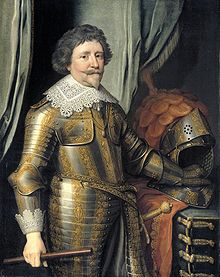
Frederick Henry, Prince of Orange. Frederick Henry was born on January 29 1584, the youngest son of William the Silent, Prince of Orange, and Louise de Coligny. William the Silent was mudered shortly after Frederick Henry’s birth, leaving him to be raised by Louise de Coligny, a major advocate for the Protestant cause.
Frederick Henry’s elder brother, Maurice, who preceded him as Prince of Orange, was one of the finest generals of the Seventeenth Century, and played a major role in Frederick Henry’s military education.
Frederick Henry became Prince of Orange after Maurice’s death in April 1625. He was both a competent military commander and an extremely capable statesman, and his reign is generally acknowledged as the golden age of the Dutch republic.
Frederick Henry’s full style is as follows:
Frederick Henry, Prince of Orange; Stadtholder of Holland, Zeeland, Utrecht, Guelders, and Overijssel; Marquis of Vedre and Vlissingen; Count of Nassau-Dillenburg, Buren, Leerdam, Katzenelnbogen, and Vlandern; Viscount of Antwerp; Baron of Algeria, Breda, Cranendonck, Lands of Cuijk, Daesburg, Eindhoven, City of Grace, Leo, IJsselstein, Diest, Grimberger, Herstal, Warneton, Beilstein, Bentheim-Lingen, Morris, Arlay, and Nozeroy; Lord of Dasburg, Geertruidenberg, Hooge en Lage Zwaluwe, Klundert, Montfort, Naaldwijk, Niervaart, Polanski, Steenbergen, Sint-Maartensdjik, Willemstad, Bütgenback, Sankt Vith, and Besançon.








